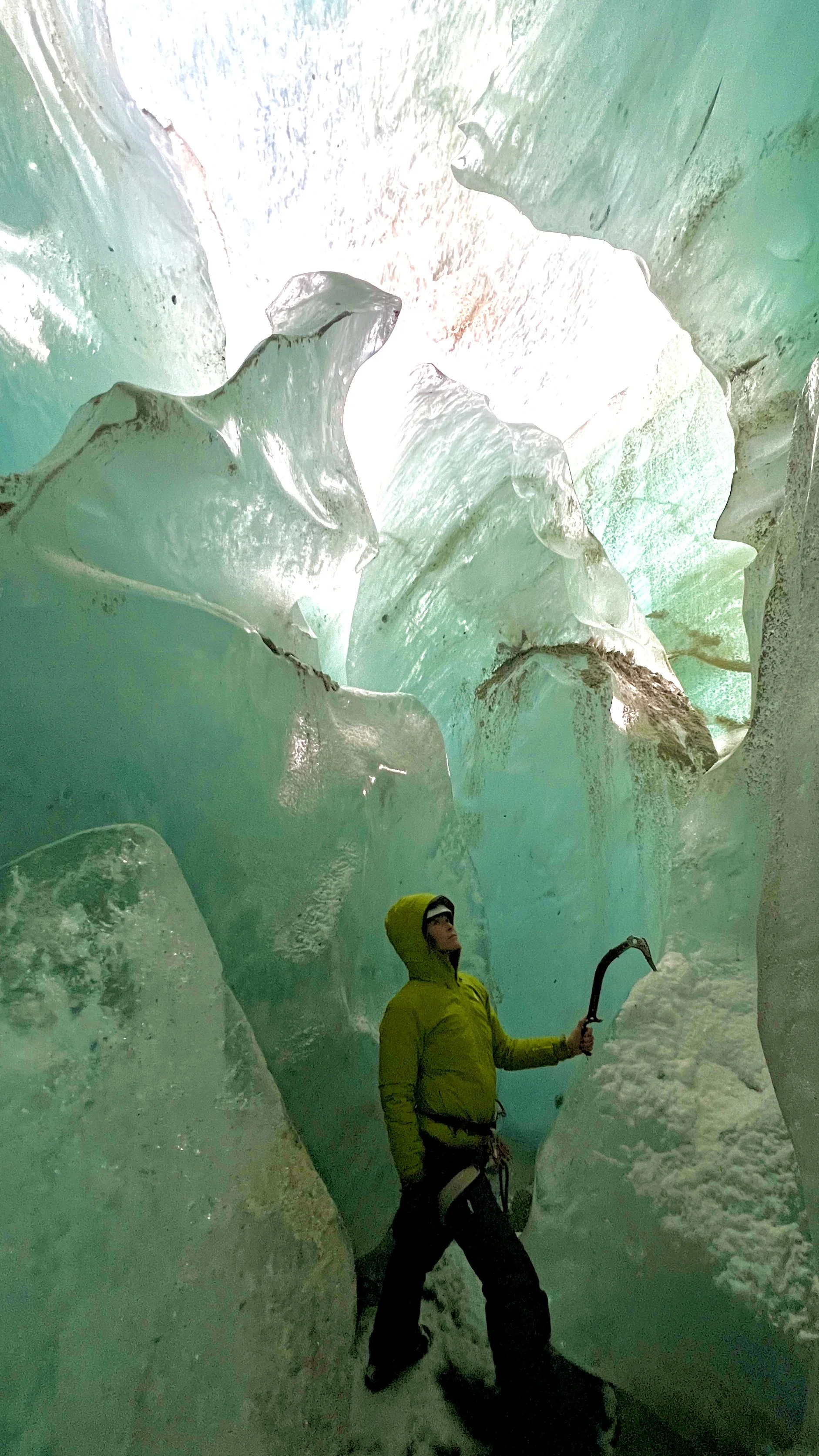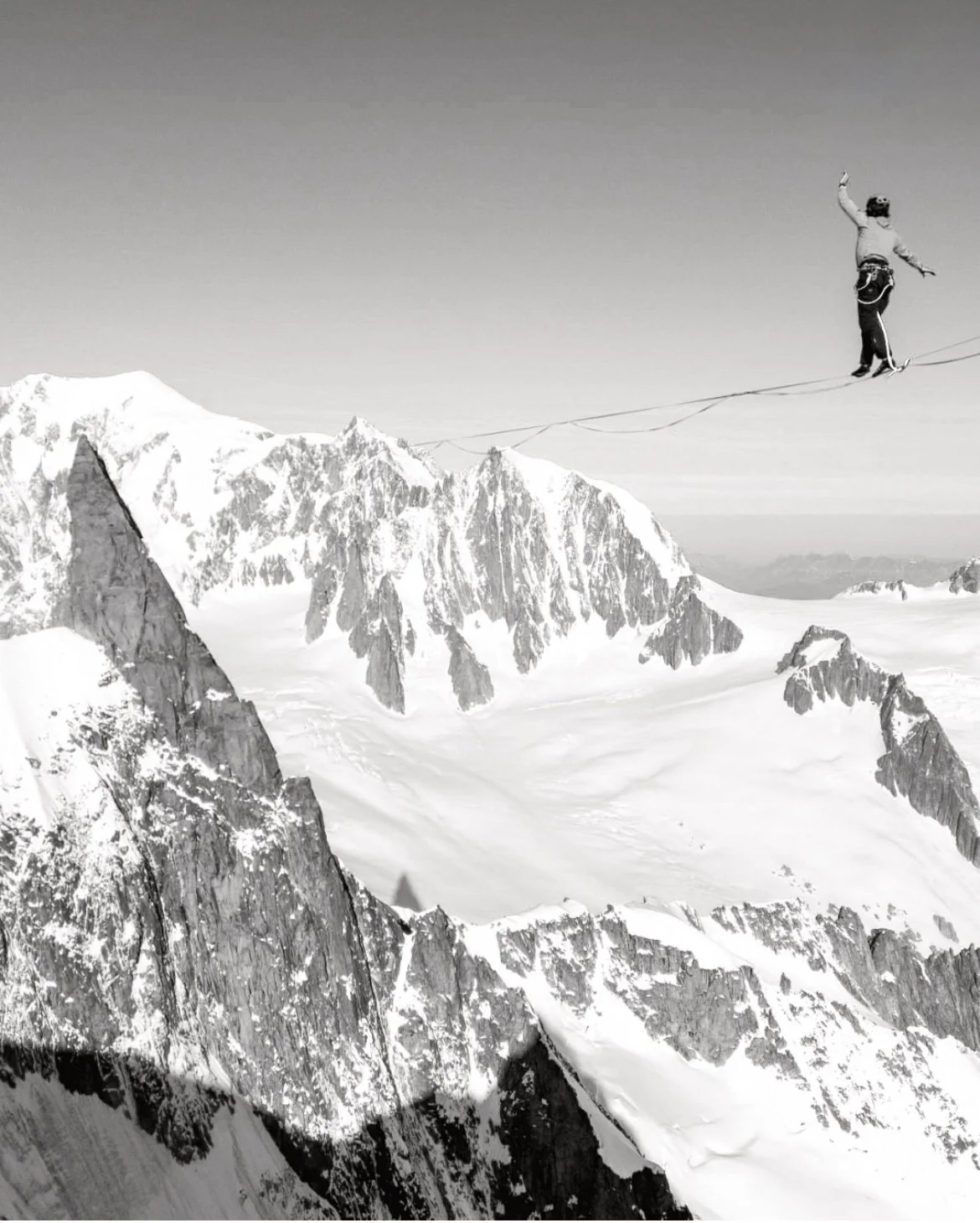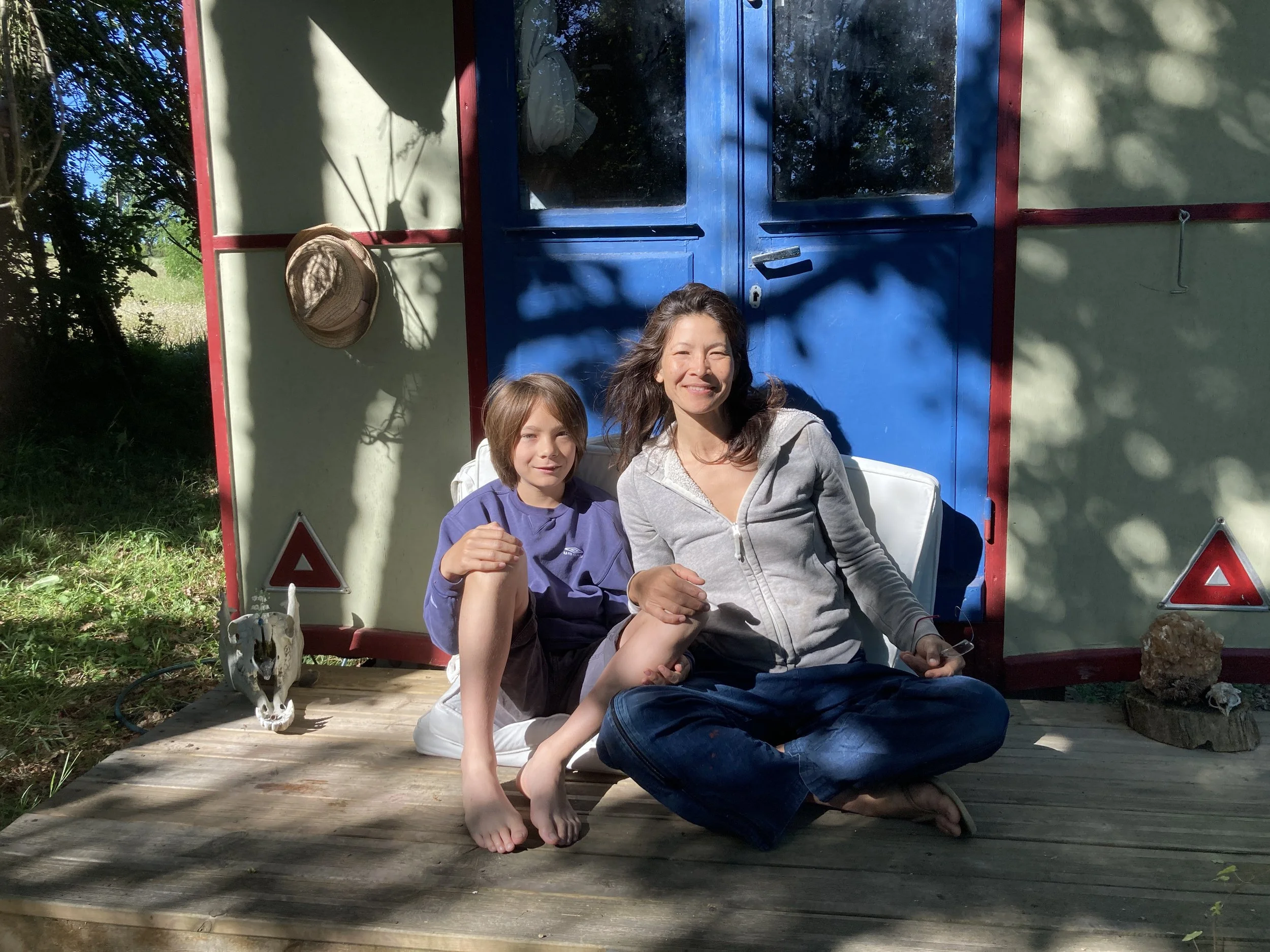I don’t know if this is the case for you, but things are shifting.
Of course, I know the government shutdown can create a slight dis-ease for some — threats of food security and rights seem to depend on the draw of the day. Nothing seems stable anymore.
The collective unconscious is a thing, and I’m noticing people uprooting, changing lifestyles, moving, and doing different things.
For me, it has been this way.
I’m in France, flying back to Hawaii later today.
I just finished the trip we manifested to Chamonix in the French Alps with my 15-year-old son.
(Read my last Museletter about how we manifested $3,500 with zero effort in 4 days for this trip.)
Our intention was rock climbing and ice climbing with an experienced guide.
The first day was the basics of rope climbing on the side of a cliff.
This felt familiar — I’d done it before. Easy enough.
The second day found me at the Via Ferrata — a sort of high-intensity obstacle course for mountain climbers.
I’m hanging from a series of little handles on the side of an 80-meter cliff (262 ft) above a rushing waterfall — for multiple hours.
And the grande finale?
Walking 120 meters (400 feet) across a tightrope over the same head-spinning void beneath me.
True, we did it safely — we clipped our harnesses to the next rung, so that if we fell, it’d be a bit of a bungee-cord effect and we wouldn’t die.
But it’s not like you want to test that for fun, so every rung and upside-down hang felt pretty much like hanging on for dear life, to say the least.
The next day, we took a tiny train up the steep, snowy mountains to a glacier.
This time, we had the right equipment for snow (referring back to my Pyrenees adventure where we found ourselves sliding down a snowy mountain with all the wrong gear).
Our guide turned out to be a world champion of slack line.
He once walked one kilometer (.62 miles) on a swinging rope from one mountain peak to another. Insane.
For him, what we were doing was about a level 0.5 on a scale of 1–10.
Yes that’s him 👇🏼
He took us to a glacier where we strapped on crampons — jaw-like spikes that attach to the bottom of mountaineering boots — and jammed them into the ice, praying they’d hold.
And then came the thing my son most desired this whole trip: ice axes.
Our amazing guide pointed us to a steep wall of ice and said,
“Okay, I’m going to take the lead to attach the rope, and then you go.”
Just like that.
No mental or emotional preparation, no holding my hand, no “It’s okay, Carly, I know you’re scared, but you can do this.”
There wasn’t even time for all that — we were here for this.
It’s not about emotion here. It’s about keeping your cool (no pun intended), ignoring the idea of a deathly fall, and just GO.
Slam your foot into the ice.
Check that it holds.
Then make a straight hit above you with the axe and hope that sticks too.
I know there’s a rope. I know he’ll hold me if I slip. But it’s mental. Nobody wants to slip.
My thighs are burning — it’s not every day you slam your toes into an ice wall and climb to the top.
Then there was the glacier cave. Wow.
This I had never planned on seeing in my entire life.
Okay, the sad thing: the glacier is melting 30 meters (98 feet) per year.
This may be the last time we’ll ever see it in our lifetime.
The inside is like a sanctuary — a marvel of nature that demands nothing but the greatest respect for the divine beauty of this Earth.
True, it’s cold as fucking ice, but if you’ve got high-tech gear, you’re okay.
Here, you’re reliant on your gear — the right clothing, gloves, shoes, equipment.
And there I am, ice-axing up a wall in an ice sculpture.
My son is elated, shooting videos with his new sports camera.
He posts two 20-second clips that already each have 60k views on TikTok.
Guess people find this stuff pretty impressive. I know I do.
I’m seeing big shifts in myself.
Things I believed about who I am are falling by the wayside.
I’ve been the girl who chased summer and ocean her whole life — and here I am getting off on snow and ice on the top of a mountain.
Something in that ice cracked open in me, and it followed me home.
After our heroic trip in Chamonix, we drove 8 hours back to my little gypsy caravan on my land near Bordeaux.
I’ve got half an acre with two old houses in ruins at the top, and my caravan and my son’s cabin nestled in a cozy little clearing at the bottom.
I had planned on rebuilding the house at the top. I’d just gotten the building permit, organized the constructor — but when I got back, something shifted.
I meditated, and it hit me:
I will never be able to get over the noise of the road that passes close to that house, no matter how hard I try.
Why has it taken me nine years to realize that?
I bought this land in 2016, one year before moving back to California (and then Hawaii).
It’s been a refuge — an inexpensive place to call home when I’m in France to see my son, who lives with his father nearby.
This land has been a protective bubble from the “normal” world.
A tiny house in rural France isn’t “cool” like Americans think.
Here, it’s a symbol of being underprivileged, alternative, escaping the system, and not paying housing taxes.
I thought I needed to rebuild the ruin at the top to be credible in the eyes of my neighbors and the town hall, who watch my every move.
I was never interested in living in a “real house.”
Or maybe it was my limited mindset — that I couldn’t afford one if I didn’t live here full-time.
Then suddenly, everything shifted.
I realized the caravan represents another part of me — the part that stayed small, maneuvered around the system to belong.
Searching for a place to call home and having to hide out to do it.
My escape to America was my way of growing bigger, taking up space.
Now I live in a big spacious house there.
My life in France has been a mirror of who I was before I left.
I put my land up for sale right after that meditation and started looking for apartments in Périgueux — a gorgeous old town where my son goes to school now.
An apartment.
I never took on the identity of a girl who would live in an apartment. Never in a million years.
That was far too banal for me.
I’m the girl who lived in a van for ten years, who’s lived in garden cottages, mansions, and strange homes in Hawaii.
But an apartment? Boring.
And here I am, considering this an upgrade.
The idea sounds wonderful — no more dealing with half an acre of land, constantly repairing and building things, no more shitting in a compost toilet.
Gosh darn it, I want to shit in a ceramic toilet in France!
Wow. I’m changing. Ice, snow, and ceramic toilets.
No, I’m not planning on moving back to France, but when I’m here, I want to sit back and relax in a cozy apartment — without worrying that mice have eaten the bedspread, ants have devoured the insulation inside the walls, or spiders have invaded every corner while I was gone.
I haven’t sold the land or bought the apartment yet, but I’ve started visiting some and tasting what it would be like to live the life of a town girl for short spurts during the year.
What I love about all this — and why I’m sharing it — is this attachment-to-identity story.
There’s a sort of self-prison we create:
I am this person or that.
I would never do this or that.
This isn’t who I am.
All based on our past or who we think we are.
I realize I had this attachment to being the person who lives on the edge of society — escaping to warm weather, living in a tiny gypsy caravan in France.
That was an old identity I’m finally ready to shift.
I can toss it with my old clothes from ten years ago.
They don’t fit anymore. They don’t resonate.
I love how, as we shift vibration, people and places start to feel dissonant.
At first, the dissonance feels like two different songs playing at the same time — it causes disruption, irritation, rubs us the wrong way.
We try to adapt our tune, tweak our notes, and maybe it works.
But sometimes one tune is playing Metallica and the other is Mozart, and making it work is harder than just letting go.
Then there’s the part about non-attachment.
We play the sad violin song in our heads about how much we’ve invested in something — whether it’s a career, a home, a partner, or that old beater car full of memories.
Nostalgia sets in like taffy, pulling at the strings of our past.
What happens — who am I — if I let go?
The only absolute is change, and for some reason, we treat it like death.
And maybe it is — the death of an identity we’ve latched onto.
It’s hard. Yes, I had my moment — crying my eyes out and saying the Ho’oponopono prayer to my caravan.
I’m sorry. Please forgive me. Thank you. I love you.
And from that deep grief arose immense gratitude.
How wonderful that I could have felt safe and protected in this little caravan all these years.
This was the home we built with our own hands, when my son was only three months old.
Thank you for these memories. Thank you.
And now I’m ready to let you go, with immense gratitude.
Let go, Carly.
You can’t hold onto the past forever.
Getting rid of the objects and things that keep me tied to it is what allows me to grow.
So I can start to love snow and expand into an apartment — trusting that one day, this too may change.










